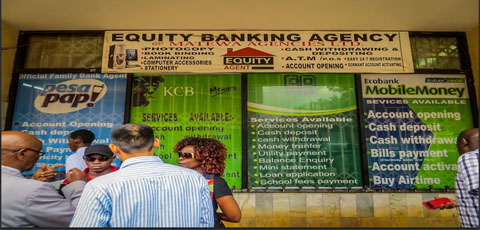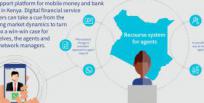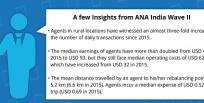
This is the second blog in a three part series, which compares digital financial service offerings in Kenya. The first blog focused on mobile money services and this second one delves into mobile banking services, focusing on digital credit. These are certainly the most complicated but also the most exciting services given their potential to deepen financial inclusion and create new revenue streams in the industry.
Competition in Digital Credit
Over thirty years of microfinance experience has shown that credit really has the ability to attract clients who are looking for both short term liquidity to help manage their money, but also want to borrow lump sums of money to help them make investments and pay larger expenses like school fees. To analyse credit products, we should look into at least three different aspects: the amount of the loan; the cost of the loan; and the repayment terms.
In terms of amounts that can be borrowed, digital lending products allow very small loans, even lower than the values offered from microfinance institutions. These loans are targeted at a specific market; they cover situations where someone needs to borrow just enough money to get on a bus, buy some vegetables for a meal or even pay for electricity tokens. However one of the issues cited in the past has been that the loans are only enough for these short term liquidity needs, and cannot cover investments, or large expenses like school fees.
.jpg)
However, with the new generation of products, that is no longer a valid concern, as the KCB M-PESA Account offers loans of up to one million KSH (~US$ 10,000) and Equitel also offers loans of up to US$ 2,000. However, the frequency with which people are approved for such large amounts is still an important issue, and it was noted in the past that the sizes of approved loans for M-Shwari (shortly after its launch) were actually much lower than the upper limit.
The cost of the loan is a complicated consideration, as it depends on the borrower’s digital credit score, the term of the loan, and the design of the product. M-Shwari and Equitel only offer something akin to an overdraft facility for one month terms. Both KCB products on the market offer lending terms which are much more flexible as they range from one to six months, and reflect the greater borrowing limits of its products, especially the KCB M-PESA Account.
M-Shwari has designed the cost of this borrowing as a fee of 7.5% of the value of the loan, which can then be doubled if the loan is not repaid in the first 30 days. Equity uses a more traditional interest rate, but varies it according to the digital credit score of the client, capping it at 10%. It is therefore very difficult to compare the price of Equity’s loan to the price of the one offered by M-Shwari even though both have the same 30 day repayment term.
The KCB products, which offer a 6% rate on a 30-day term, seem to be better deals than M-Shwari. However more in-depth analysis is needed, as the KCB M-PESA Account does not disburse the full value of the loan. It deducts the cost of borrowing upfront, and therefore increases the real rate of interest charged. Comparing the KCB products to Equitel for a one month term is difficult as well, as the range of Equitel interest rates means it could offer a better or worse deal on a case-by-case basis.
However, it may be reasonable to surmise that on average the KCB M-PESA Account will probably provide the best rates for a 30 day loan for the majority of Kenyans that are not already active Equity clients. This is because both M-Shwari and the KCB M-PESA Account have partnerships with Safaricom, and therefore have access to the customer profiles of Safaricom’s 23.35 million customers, and this better informs their digital credit scoring algorithm. In comparison, Equity has data on a much smaller number of customers to use for its credit scoring algorithms.
Theoretically this should mean that the KCB M-PESA Account has more accurate credit scores on the large number of Kenyans that are not KCB or Equity clients, yet have a Safaricom SIM, which should reduce the risk of lending and therefore the cost of lending. However, more testing of the systems is required to see if this advantage actually does lead to lower lending rates, and also if the credit scoring based on GSM data is good enough to keep repayment rates high and products like M-Shwari and the KCB M-PESA Account on the market in the long term.
In terms of digital credit, the KCB M-PESA Account seems to have the best value proposition as it offers competitive prices, the largest value loan, and the most flexible terms, and hopefully it will be able to keep potential risk under control. While the cost of borrowing for a term of 30 days is complicated, for values over $2,000 and for terms longer than 30 days, it is the only product on the market for now. Furthermore, with a reported almost two million registered customers in its first three months of operations, it seems that many Kenyans agree.
In the third blog in this series, we examine digital deposit services. These products are important as intuitive money management products are very attractive to customers and this can really drive increased usage and thus expand financial inclusion.
Note: These prices were collected in November 2015 by reviewing provider websites and advertisements; by reviewing terms and conditions; and by calling customer service centres when necessary. It is important to note that volatile market interest rates and dynamic competitive pricing schemes mean that prices change constantly. Further, in multiple cases we received conflicting information from providers on their pricing schemes, and did our best to resolve them.











